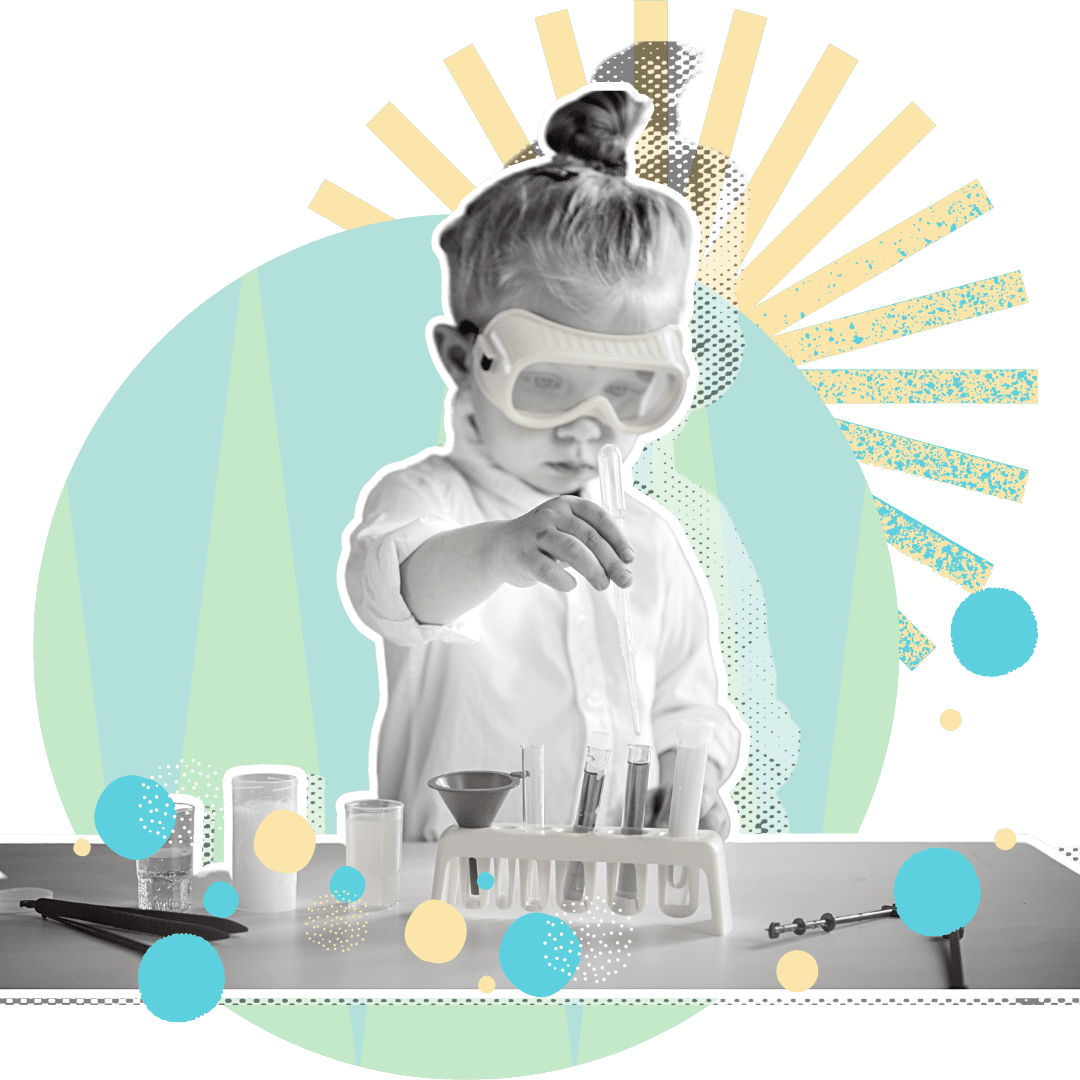People ask me all the time, “why do kids need a massage?” They wonder if any research studies support the benefits, or is this more of a “relaxation-based intervention without any other benefit?”
Of course, relaxation is at the foundation of touch therapy, and being relaxed often leads to additional benefits. There are times when the sole purpose of the intervention is relaxation, and it should be. Kids do have stress, too. Think about it, if you have a medical treatment you are stressed about, it likely won’t go well.
It’s always important to keep in mind all children develop and grow and their rate.
So, they may each experience massage therapy differently from one another. Not every child will have the same response. Some kids report they feel better right away, while multiple therapeutic sessions make a difference for other children.
The physical, psychological, and emotional benefits of touch therapy for children have been well documented in published research studies.
Our goal is to provide this non-invasive therapy to achieve a beneficial response and may include one (or more) of the seven most reported Pediatric Touch Therapy benefits backed by science.

1. Growth and development improvements [1, 2, 3, 4, 5, 6, 7, 8]
2. Optimal sleep patterns [9, 10, 11, 12, 13]
3. Reduction in anxiety [14, 15, 16, 17]
4. May ease physical symptoms, as well as emotional discomforts associated with pediatric medical conditions [18, 19, 20, 21]
5. Stress hormones decreased [22, 23, 24, 25, 26]
6. Immune function enhanced [27, 28, 29, 30, 31, 32]
7. Pain reduced [33, 34, 35, 36]
There is overwhelming evidence that massage provides global benefits to a child’s health that far outweighs any evidence of adverse effects.
✦ References:
1. Field, T., Diego, M., & Hernandez-Reif, M. (2010a). Moderate pressure is essential for massage therapy effects. International Journal of Neuroscience, 210, 381-385.
2. Field, T., Diego, M., Hernandez-Reif, M. (2010b). Preterm infant massage therapy research: A review. Infant Behavior and Development, 33, 115-124.
3. Field, T., Diego, M., Hernandez-Reif, M., Dieter, J., Kumar, A., Schanberg, S., et al (2008). Insulin and insulin-like growth factor I (IGF-1) Increase in preterm infants following massage therapy. Journal of Developmental and Behavioral Pediatrics, 29, 463-466.
4. Weiss, W. J., Wilson, P. W., & Morrison, D. (2004). Maternal tactile stimulation and the neurodevelopment of low birth weight infants. Infancy, 5, 85-107.
5. Fallah R, Karbasi S, Golestan M, Fromandi M. (2013) Sunflower oil versus no oil moderate pressure massage leads to more significant increases in weight in preterm neonates who are low birth weight. Early Human Development,. 89:769-772.
6. Moyer-Mileur L, Haley S, Slater H et al. (2013)Massage improves growth quality by decreasing body fat deposition in male preterm infants. J Pediatr, 162(3):490-495.
7. Diego, M., Field T, Hernandez-Reif M. (2014). Preterm infant weight gain is increased by massage therapy and exercise via different underlying mechanisms. Early Hum Dev, 90(3):137-140.
8. Niemi A. Review of randomized controlled trials of massage in preterm infants. (2017) Children4,21; doi:10.3390/children4040021
9. Ackerman, Sara L, Lown, EA, Dvorak, C. C. et al (2012). Massage for Children Undergoing Hemotopoietic Cell Transplantation: A Qualitative Report. Evidence-Based Complementary and Alternative Medicine, 2012.
10. Al-Rafay, Safy, S., & Eman, A. Ali (2013). Effect of Massage on Sleep Disturbances of Children after Abdominal Surgeries. Journal of American Science, 9(12).
11. Jacobs S, Mowbray C, Cates LM et al. (2016) Pilot study of massage to improve sleep and fatigue in hospitalized adolescents with cancer. Pediatr Blood Cancer, 63:880-886
12. Ackerman S, Lown E, Dvorak C et al. (2012). Massage for children undergoing hematopoietic cell transplantation; a qualitative report. Evidence-Based Complementary and Alternative Med, article ID 792042, 9 pages.
13. Jacobs S, Mowbray C, Cates LM et al. (2016) Pilot study of massage to improve sleep and fatigue in hospitalized adolescents with cancer. Pediatr Blood Cancer, 63(5):880-6.
14. Celebioglu, Aya, Gurol, Ayse, et al. (2014). Effects of massage therapy on pain and anxiety arising from intrathecal therapy or bone marrow aspiration in children with cancer. International Journal of Nursing Practice.
15. Guan, Ling, Collet, Jean-Paul, Yuskiv, Nataliya, et al. (2014). The Effect of Massage Therapy on Autonomic Activity in Critically Ill Children. Evidence-Based Complementary and Alternative Medicine, 2014.
16. Field, T. (2014). Massage therapy research review. Complementary Therapies in Clinical Practice, 20, 224-229.
17. Celebioglu A, Gurol A, Yildirim ZK et al. (2015) Effects of massage therapy on pain and anxiety arising from intrathecal therapy or bone marrow aspiration in children with cancer. Int J Nurs Pract, 21(6):797-804.
18. Guan, Ling, Collet, Jean-Paul, Yuskiv, Nataliya, et al. (2014). The Effect of Massage Therapy on Autonomic Activity in Critically Ill Children. Evidence-Based Complementary and Alternative Medicine, 2014.
19. Field, T. (2014). Massage therapy research review. Complementary Therapies in Clinical Practice, 20, 224-229.
20. Suresh, S., Wang, S. Porfyris, S., Kamasinski-Sol, R., Steinhorn, D. M. (2008). Massage therapy in outpatient pediatric chronic pain patients: do they facilitate significant reductions in levels of distress, pain, tension, discomfort, and mood alterations? Pediatric Anesthesia, 18(9), 884-887.
21. Azima S, Bakhshavesh HR, Kaviani M et al. (2015) Comparison of the effect of massage therapy and isometric exercises on primary dysmenorrhea. A randomized controlled clinical trial. J Pediatr Adolesc Gynecol, 28(6):486-91
22. Field, T., Hernandez-Reif, M., Diego, M., Schanberg, S., & Kuhn, C. (2005). Cortisol decreases, and serotonin and dopamine increase following massage therapy. International Journal of Neuroscience, 115, 1397-1413.
23. Ishikawa, C., & Shiga, T. (2012). Massage changes babies’ body, brain, and behavior. Kansei Engineering International Journal. 11, 109-114.
24. Smith, S., Haley, S., Slater, H., & Moyer-Mileur, L. J. (2013). Heart rate variability during caregiving and sleep after massage therapy in preterm infants. Early human development, 89(8), 525-529.
25. Hernandez-Reif, M., Diego, M., & Field, T. (2007). Preterm Infants Show Reduced Stress Behaviors and Activity after 5 days of Massage Therapy. Infant Behav Dev., 30(4), 557-61.
26. Neu M, Pan Z, Workman R et al. (2014) Benefits of massage therapy for infants with symptoms of gastroesophageal reflux disease. Biological Res for Nursing, 16(4):387-397.
27. Post-White, J., Fitzgerald, M., Savik, K., Hooke, M. C., Hannahan, A. B., & Sencer, S. F. (2009). Massage therapy for children with cancer. Journal of Pediatric Oncology Nursing, 26, 16-28.
28. Field, T. Diego, M., & Hernandez-Reif, M. (2006). Massage therapy research. Developmental Review, 27, 75-89.
29. Diego, M. A., Hernandez-Reif, M., Field, T., Friedman, L., & Shaw, K. (2001). HIV adolescents show improved immune function following massage therapy. International Journal of Neuroscience, 106, 35-45.
30. Shor-Posner, G., Hernandez-Reif, M., Miguez, M. J., Fletcher, M., et al. (2006). Impact of a massage therapy clinical trial on immune status in young Dominican children infected with HIV-1. Journal of Alternative and Complementary Medicine, 12(6), 511-6.
31. Field, T. (2010). Touch for socioemotional and physical well-being: A review. Developmental Review,30, 367-83.
32. Ang J, Lua J, Mathur A et al. (2012). A randomized placebo-controlled trial of massage therapy on the immune system of preterm infants. Pediatrics, 130:e1549-e1558.
33. Suresh, S., Wang, S., et al (2008). Massage therapy in outpatient pediatric chronic pain patients: Do they facilitate significant reductions in levels of distress, pain, tension, discomfort, and mood alterations? Paediatric Anaesthesia, 18, 884-887.
34. Parlak Gurol, A., Polat, S., Akcay, M. N. (2010). Itching, pain, and anxiety levels are reduced with massage therapy in burned adolescents. J Burn Care Res., 30(3), 429-32.
35. Haun, J. N., Graham-Pole, J., Shortely, B. (2009). Children with cancer and blood disease experience positive physical and psychological effects from massage therapy. International Journal of Therapeutic Massage and Bodywork, 2(2), 7-14.
36. Celebioglu A, Gurol A, Yildirim ZK et al. (2015) Effects of massage therapy on pain and anxiety arising from intrathecal therapy or bone marrow aspiration in children with cancer. Int J Nurs Pract, 21(6):797-804.

